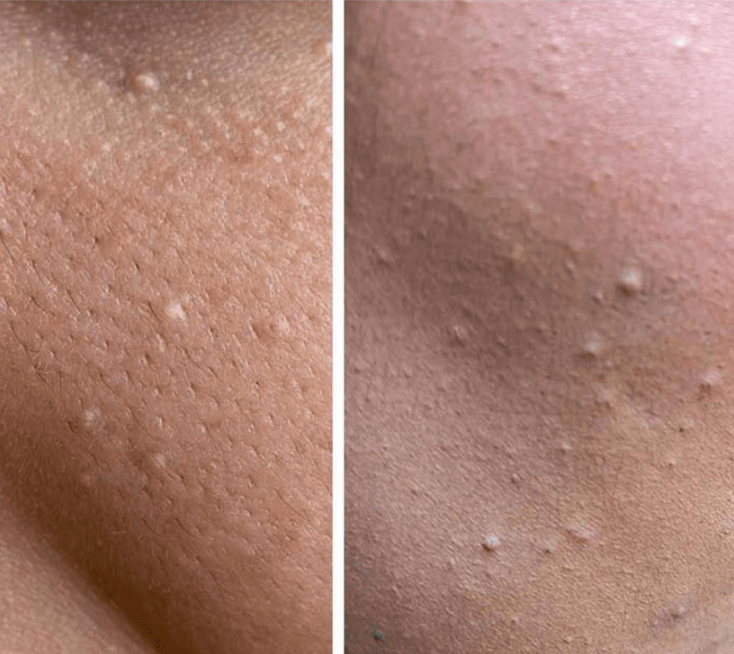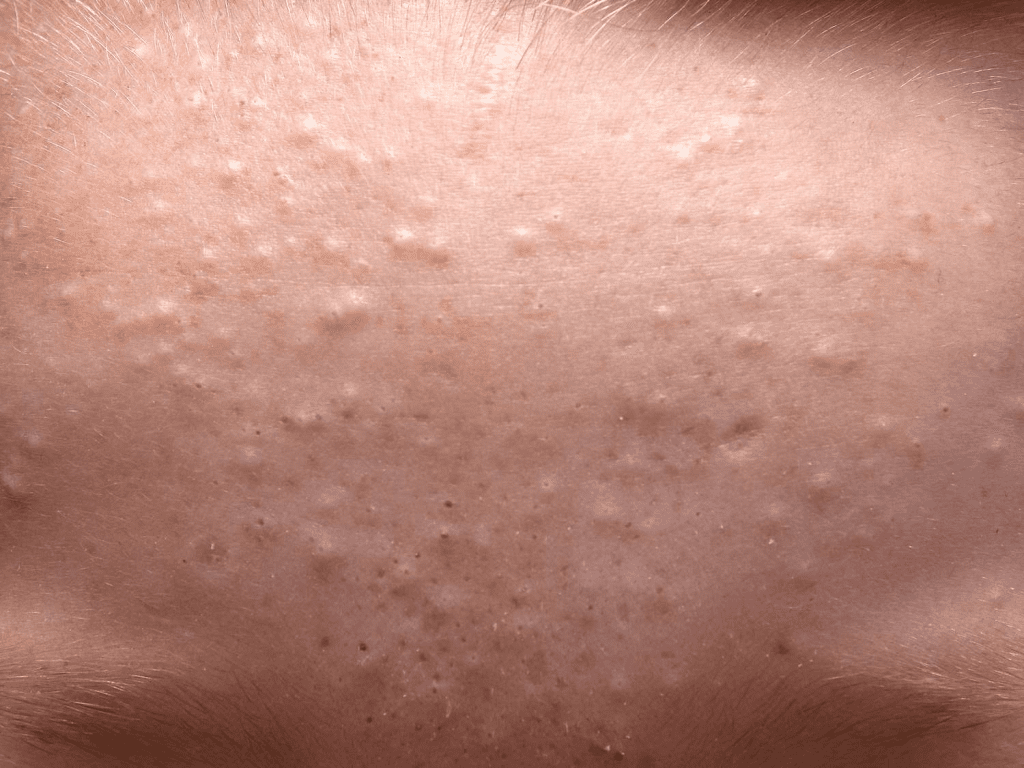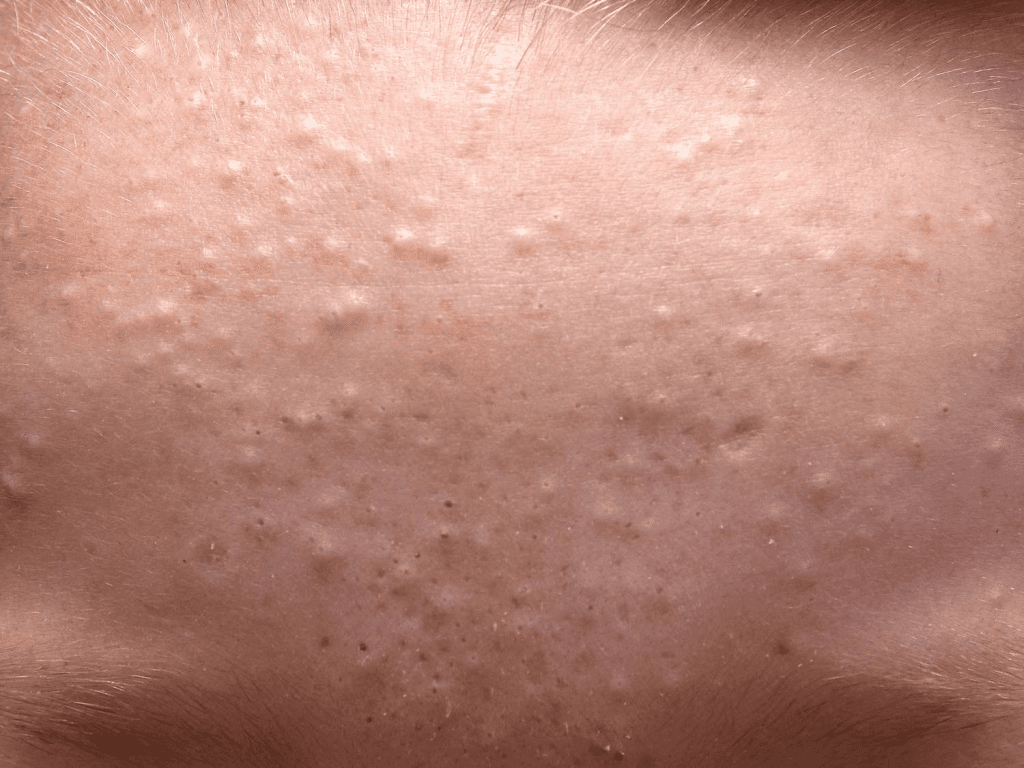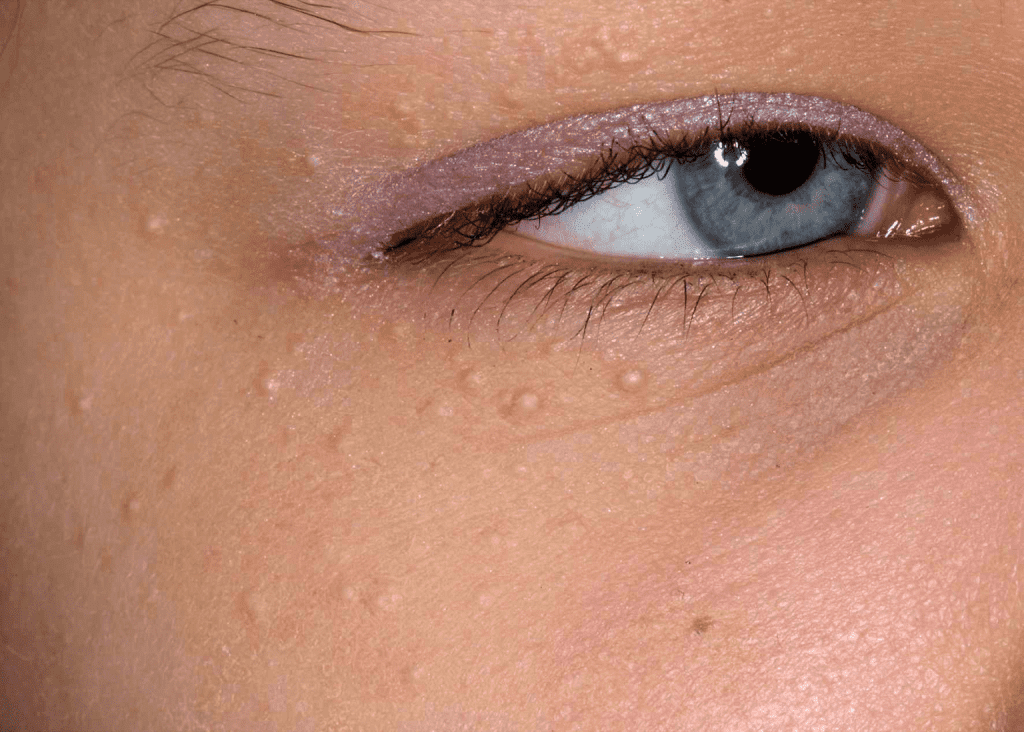If you’ve been noticing small, white bumps on your skin, particularly around your nose, you’re not alone. These tiny blemishes can be frustrating, especially when they refuse to go away with your usual skincare routine. While they may look like pimples, these bumps are likely something different altogether. In most cases, these are known as milia, and understanding how to treat them effectively can make a significant difference in achieving clearer skin.

But what exactly are milia, and should you be worried? Let’s break down the causes, whether you should be concerned, and the best ways to remove them.
What Are Milia?
Milia are small, white or yellowish bumps that commonly appear on the face, especially around the nose, cheeks, and eyes. Unlike regular acne, milia are not caused by clogged pores or bacteria. Instead, they are keratin-filled cysts that form just below the surface of the skin. Essentially, they occur when dead skin cells get trapped, leading to the formation of these stubborn little bumps.
Milia don’t have an opening, which makes them different from pimples or blackheads. This is why you can’t just squeeze them or treat them with typical acne products. Instead, they require a more specialized approach for removal.
Should You Be Worried About Milia?
For the most part, milia are nothing to worry about. They’re usually harmless, but that doesn’t mean they can’t be bothersome. Here’s why:
1. Benign and Harmless The good news is that milia are generally benign. They won’t cause you any harm, nor do they typically signal a serious health issue. For most people, these little bumps are a cosmetic concern rather than a medical problem.
2. Persistent but Non-Threatening While milia aren’t dangerous, they can be persistent. These bumps can linger on the skin for weeks, months, or even longer if left untreated. The key to managing them is understanding how to treat them correctly without causing further irritation.
3. Potential Indicators of Underlying Health Conditions In rare cases, a sudden outbreak of milia—especially if it appears in large numbers—could indicate an underlying health issue. If this happens, or if you notice other symptoms like swelling or redness, it may be a good idea to consult a dermatologist for further evaluation.
How Can You Remove Milia?
Though milia are stubborn, the good news is that there are several effective ways to remove them. However, since they don’t respond to standard acne treatments, you’ll need to take a different approach.
1. Professional Extraction
One of the most reliable ways to remove milia is by visiting a skincare professional or dermatologist. Professional extraction is a safe and effective method, as dermatologists have the tools and expertise to remove milia without causing infection or scarring.

Never try to pop or squeeze milia at home. Without proper tools and techniques, this can lead to scarring, skin damage, or infection.
2. Prescription Retinoids
Topical retinoids, such as prescription retinoid creams, can help encourage skin cell turnover and exfoliation. This can help to bring trapped keratin to the surface, allowing the milia to clear up over time. It’s essential to consult with a dermatologist before starting retinoid treatment, as they can recommend the appropriate product and regimen for your skin type.
3. Over-the-Counter Exfoliants
Using over-the-counter exfoliants can also help speed up the natural shedding of dead skin cells. Look for products that contain alpha hydroxy acids (AHAs) or beta hydroxy acids (BHAs), which gently exfoliate the skin and help prevent the buildup of dead skin cells that can lead to milia.

Consistency is key when using these products. Regular exfoliation can prevent future milia from forming and help existing bumps to fade away.
4. Gentle Home Remedies
While professional treatments are often more effective, some gentle home remedies may help reduce milia. Steaming your face can open up your pores, potentially helping to soften the bumps. After steaming, you can gently exfoliate with a soft washcloth or a mild facial scrub.
However, proceed with caution. Over-scrubbing or using harsh exfoliants can irritate your skin and make the problem worse. If in doubt, stick to professional treatments.
5. Avoid Heavy Creams and Oily Products

One of the easiest ways to prevent milia is to avoid heavy creams and oily skincare products. These can clog pores and contribute to the buildup of dead skin cells, increasing the likelihood of milia forming. Opt for non-comedogenic products that are lightweight and won’t block your pores.
What Causes Milia?
Milia can be triggered by several factors, many of which are related to skincare habits or environmental conditions. Some of the most common causes include:
- Using heavy or occlusive skincare products: Thick moisturizers and oils can trap dead skin cells beneath the surface, leading to milia formation.
- Sun damage: Overexposure to the sun can cause the skin to thicken, making it harder for dead skin cells to shed properly.
- Lack of exfoliation: If you’re not regularly exfoliating, dead skin cells can accumulate, contributing to milia development.
- Genetics: Some people are more prone to milia due to their genetic makeup.
Can You Prevent Milia?
While there’s no foolproof way to prevent milia altogether, adopting a few healthy skincare habits can reduce your risk:
- Exfoliate regularly: Use gentle exfoliating products to keep dead skin cells from building up.
- Protect your skin from the sun: Always apply sunscreen to prevent sun damage, which can thicken the skin and contribute to milia.
- Avoid heavy creams: Stick to lightweight, non-comedogenic skincare products to minimize pore-clogging.
- Stay hydrated: Healthy skin starts from within, so drink plenty of water and eat a balanced diet to support skin health.
Conclusion: Clear Skin is Within Reach
Though milia can be persistent and frustrating, they’re generally harmless and treatable. Whether you opt for professional extraction, over-the-counter exfoliants, or a simple adjustment in your skincare routine, managing these little white bumps is possible with the right approach. If the bumps persist or you’re unsure about what’s causing them, it’s always a good idea to consult a dermatologist for personalized advice.
Don’t let those small white bumps weigh you down—clearer, smoother skin is within your reach!


